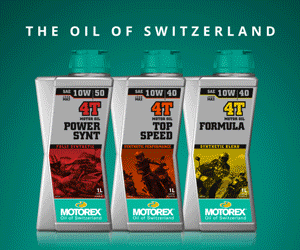1965 BSA A65 Lightning Clubman
With Ian Falloon
BSA, or Birmingham Small Arms, was once the largest motorcycle manufacturer in Britain, known primarily for producing “bread and butter” machines, largely for the British Army and many police forces around the world.
During the 1950s, 75,000 motorcycles left the factory at Small Heath in South Birmingham each year. But apart from the rare Rocket Gold Star, BSA never enjoyed the same reputation for producing sporting twins as Norton and Triumph. If you wanted handling in the 1960s, you bought a Norton, and if you wanted a high-performance engine, you went for a Triumph.

In many ways, the BSA A7 and A10 500 and 650cc twins were the definitive British twins of the period, but apart from the Rocket Gold Star, the brand failed to lure the performance-oriented enthusiast.
The other problem afflicting the A7 and A10 was they were perceived as old-fashioned as they retained a separate engine and gearbox.
In 1962, BSA released the 500cc A50 and 650cc A65 in response to the increased demand for unit construction twins.
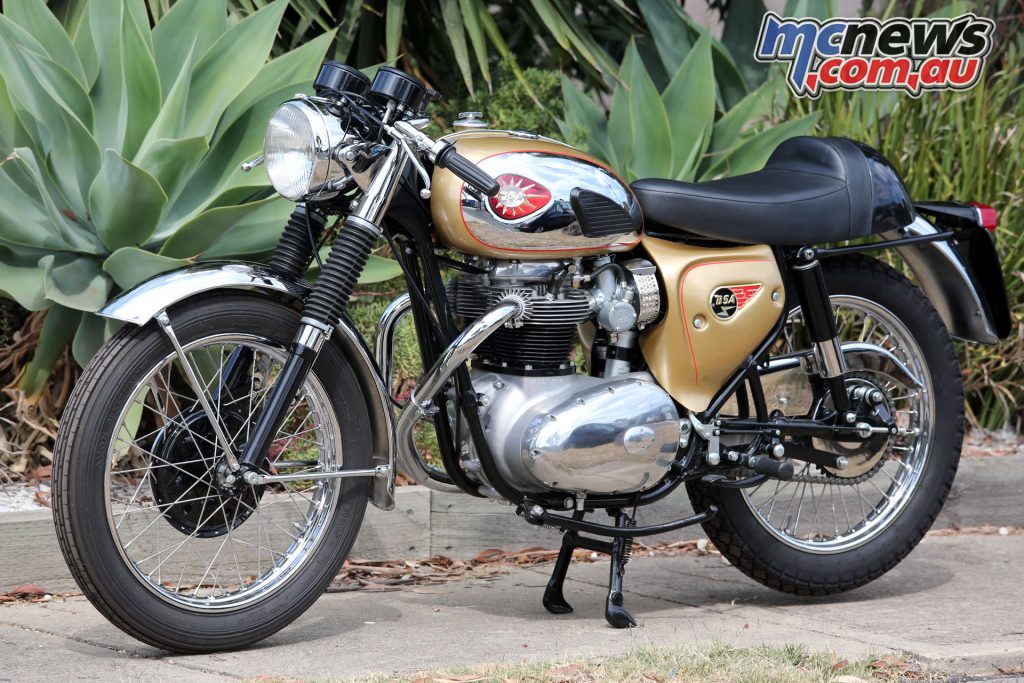
Retaining many components from the earlier A10, including a bulletproof bottom end, the A65 had considerably more oversquare engine dimensions of 75 x 74 mm and an improved cylinder head design. This better-breathing cylinder head eventually allowed some versions to produce up to 55 horsepower.
The unit construction engine had clean lines. The overhead valves were still operated by pushrods, and a single camshaft was located behind the cylinders. To adapt the engine to US short-track dirt racing, the primary drive was a stronger Triplex chain.
The new engine looked bulkier than its predecessor but was actually 14 kg lighter and 40 mm shorter. But although the A65 promised an improvement over its predecessor, it got off to a bad start. Development was rushed in response to US demand, and the new twins were plagued with teething troubles.
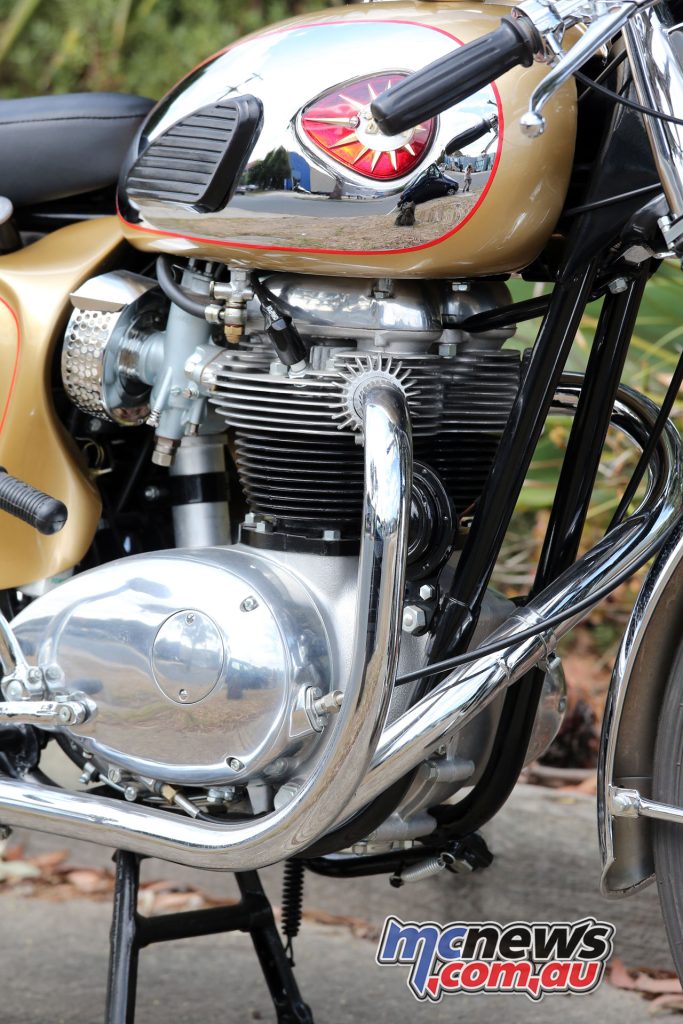
The most serious problem was the failure of the drive side plain main bearing, and BSA was kept busy with warranty claims for years. For some reason, the factory never provided a cure for the main bearing problem, although a roller bearing conversion was a relatively easy solution. Even if the engine stayed together, the A65 was also one of the worst vibrators of all British 360-degree parallel twins.
As the early models were criticised for their sluggish performance, continued development saw the high-performance twin carburettor A65 Lightning appear in 1964. The Lightning featured a new aluminium cylinder head with splayed inlet ports, a 9:1 compression ratio, and sports camshaft.
The twin Amal Monobloc carburettors included individual air filters, and all engines were individually bench tested, a practice previously reserved only for the single-cylinder Gold Stars. The power was 48 horsepower, and as the weight was a moderate 181 kg the Lightning was a fast motorcycle by mid-1960s standards, topping out at around 180 km/h.

When it came to the chassis and cycle parts the Lightning presented standard mid-sixties British fare. The chassis included a double cradle frame, 19 and 18-inch wheels and unremarkable single-sided drum brakes, an 8-inch on the front.
By the time the Lightning was introduced, all A65s had an improved 12-volt electrical system but initially retained two 6-volt batteries in series. The A65 Lightning was also launched into stardom when it appeared alongside James Bond’s Aston Martin DB5 in the 1965 film “Thunderball.”
For 1965, a higher-performance Lightning was offered. Dubbed the A65LC for Lightning Clubman, the engine included a sports camshaft, carburettors with individual air filters, and a Siamesed exhaust system. Each engine was individually bench tested, and the power was 51 horsepower at 6750 rpm.
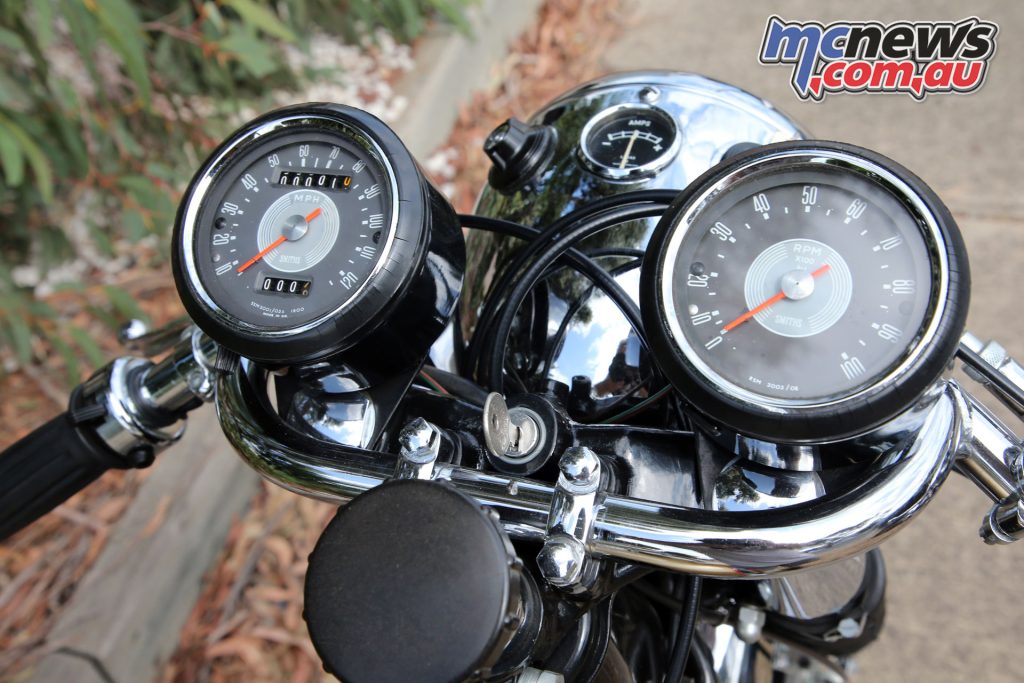
The Lightning Clubman also received a close ratio gearbox with the cam plate reversed to retain the normal gearshift pattern with the rear-mounted footrests and reversed pedal. The Lightning Clubman was finished off with a set of dropped handlebars and a racing seat.
Mike Hailwood won a rain-soaked 15-lap production race at Silverstone on a Lightning Clubman in 1965. Arguably the first true factory café racer, the Lightning Clubman only lasted one year.
In 1966, BSA was intent on expanding further into the US market, and along with the even higher-performance Spitfire, the Lightning received a myriad of updates. This included larger carburettors (30 mm), shorter valve springs, a new clutch, and two-way damped front fork.
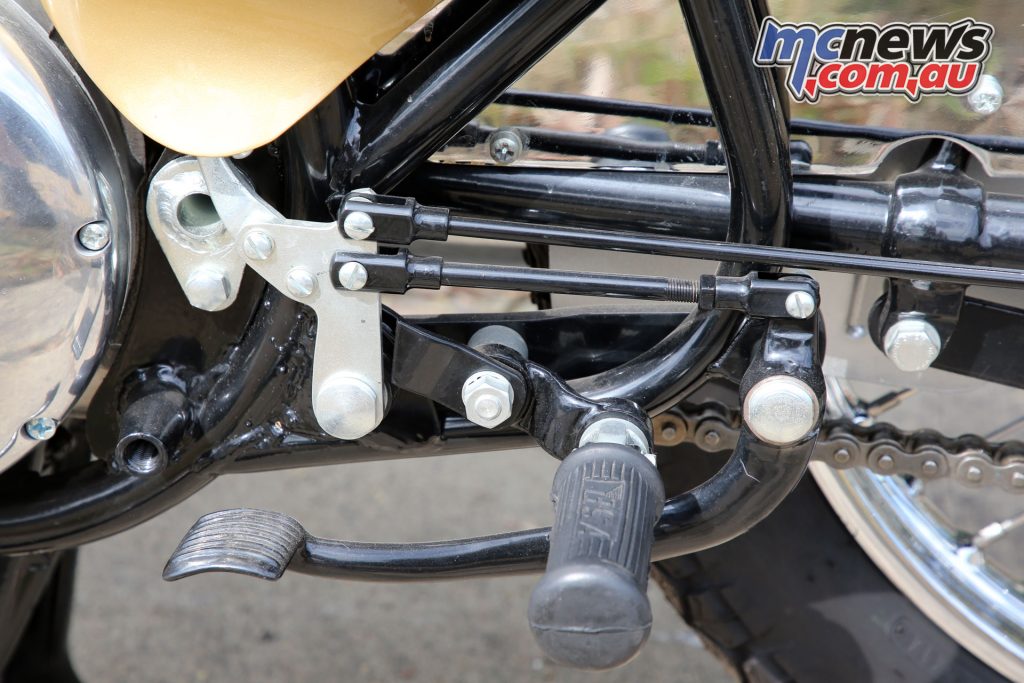
Every year, BSA worked on improving their A65, and by 1968, the Lightning had a superior contact breaker ignition, new styling, and a full-width front drum brake. After a couple of very poor selling seasons, BSA was almost in panic mode by 1970. As the engine was tuned for more performance, noise, vibration, and harshness increased.
BSA responded by improving the oil supply, and the next development cycle was spent trying to curb the oil leaks. For 1971, the A65 twins were updated with a new oil-in-the-frame design. Much higher and wider than before, they only lasted until 1972.
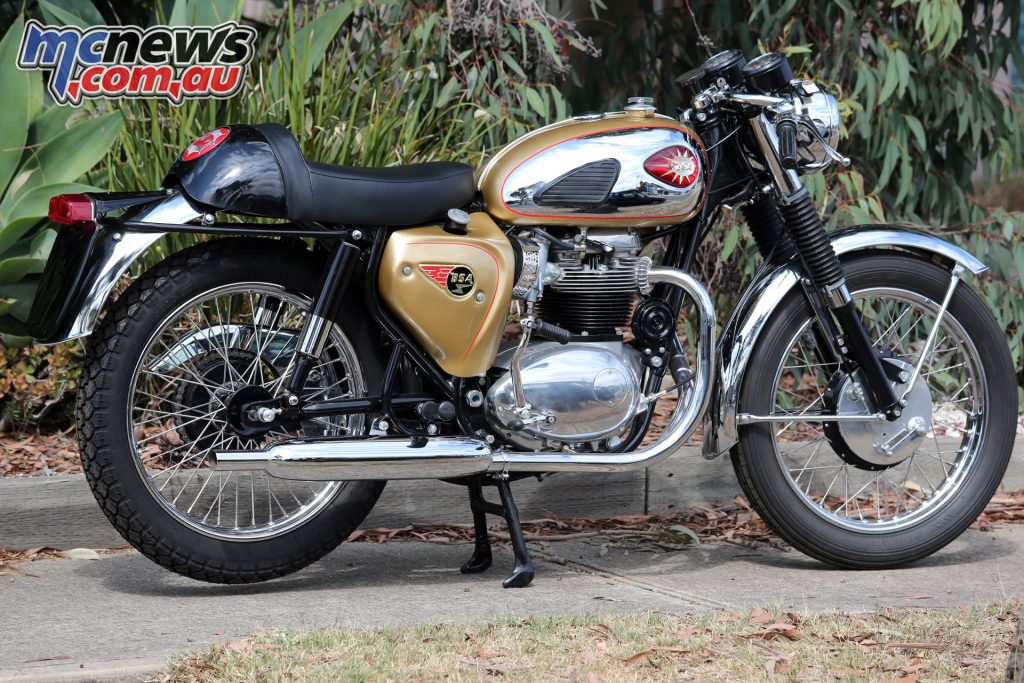
Unfortunately, the A65 Lightning was a victim of the troubles besetting BSA during the 1960s and is unjustly maligned. The motor is simple, requiring only three special pullers to completely strip. Reliability issues and vibration aside, A65s were pleasant to ride, with safe and predictable handling.
If the reliability had been better BSA would almost have had a machine to rival the Triumph Bonneville. And of all BSA A65 Lightnings, the rare and little-known Lightning Clubman is the pick of them all.
1965 BSA A65 Lightning Clubman Specifications
| 1965 BSA A65 Lightning Clubman Specifications | |
| Engine | Four stroke, parallel twin cylinder, OHV |
| Capacity | 654 cc |
| Bore x Stroke | 75 x 74 mm |
| Carburettors | Amal monobloc 389 |
| Cooling System | Air cooled |
| Compression Ratio | 9.0:1 |
| Lubrication | Dry sump |
| Exhaust | 2-into-1 |
| Ignition | Twin coil |
| Starting | Kick start |
| Max Power | 51 hp @ 6750 rpm |
| Clutch | Multi-plate with bult-in cush drive |
| Transmission | Four-speed |
| Final Drive | Chain |
| Frame | Steel tubing, cradle |
| Front Suspension | Telescopic forks with coil spring – hydraulically damped |
| Rear Suspension | Coil spring/hydraulically damped |
| Front Brakes | 8 in, drum |
| Rear Brakes | 7 in, drum |
| Front Rim | WM2-19, WM2-18 |
| Front Tyre | 3.25 x 19 in, 3.50 x 18 in |
| Wheelbase | 1375 mm |
| Seat Height | 800 mm |
| Wet Weight | 180 kg |
| Fuel Capacity | 18.2 litres |








